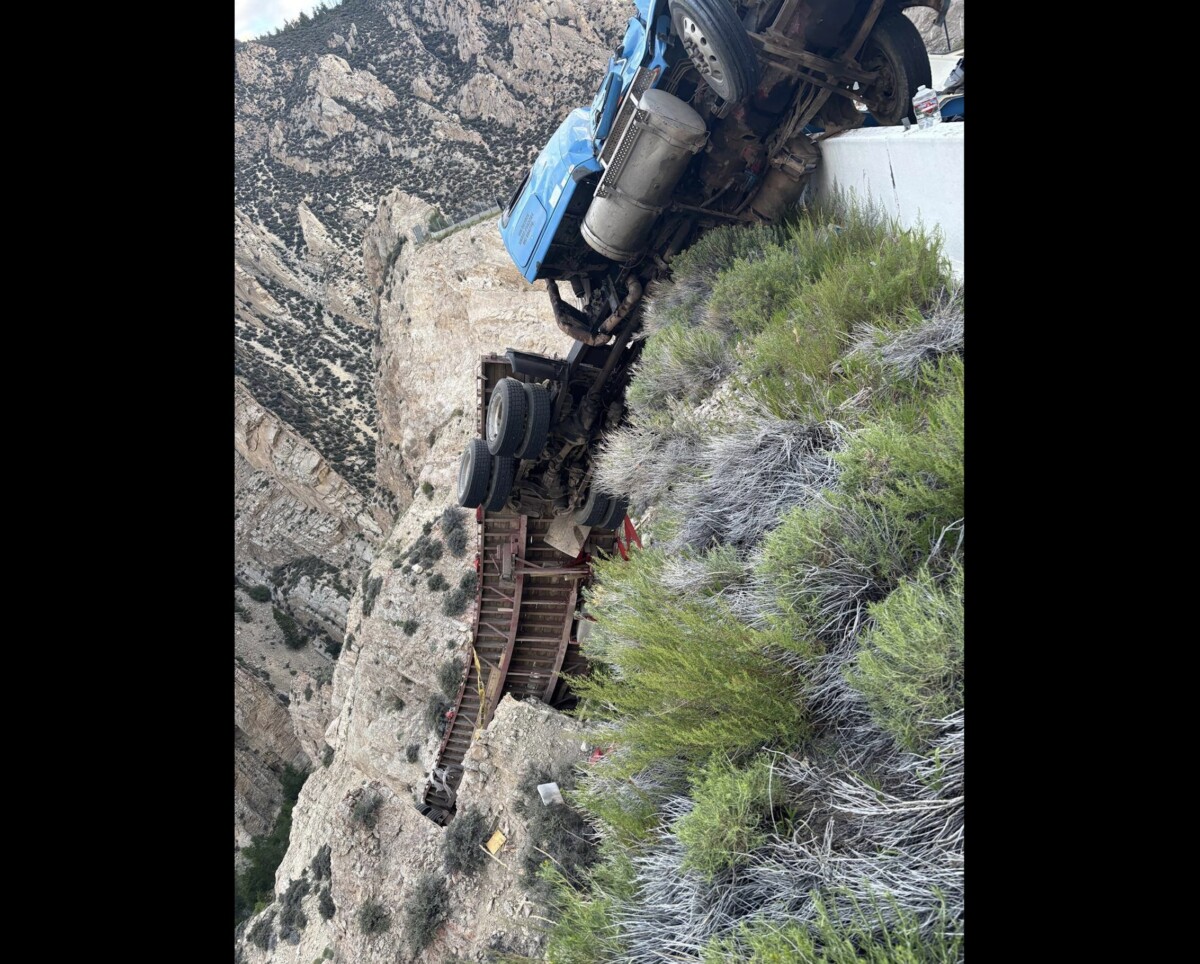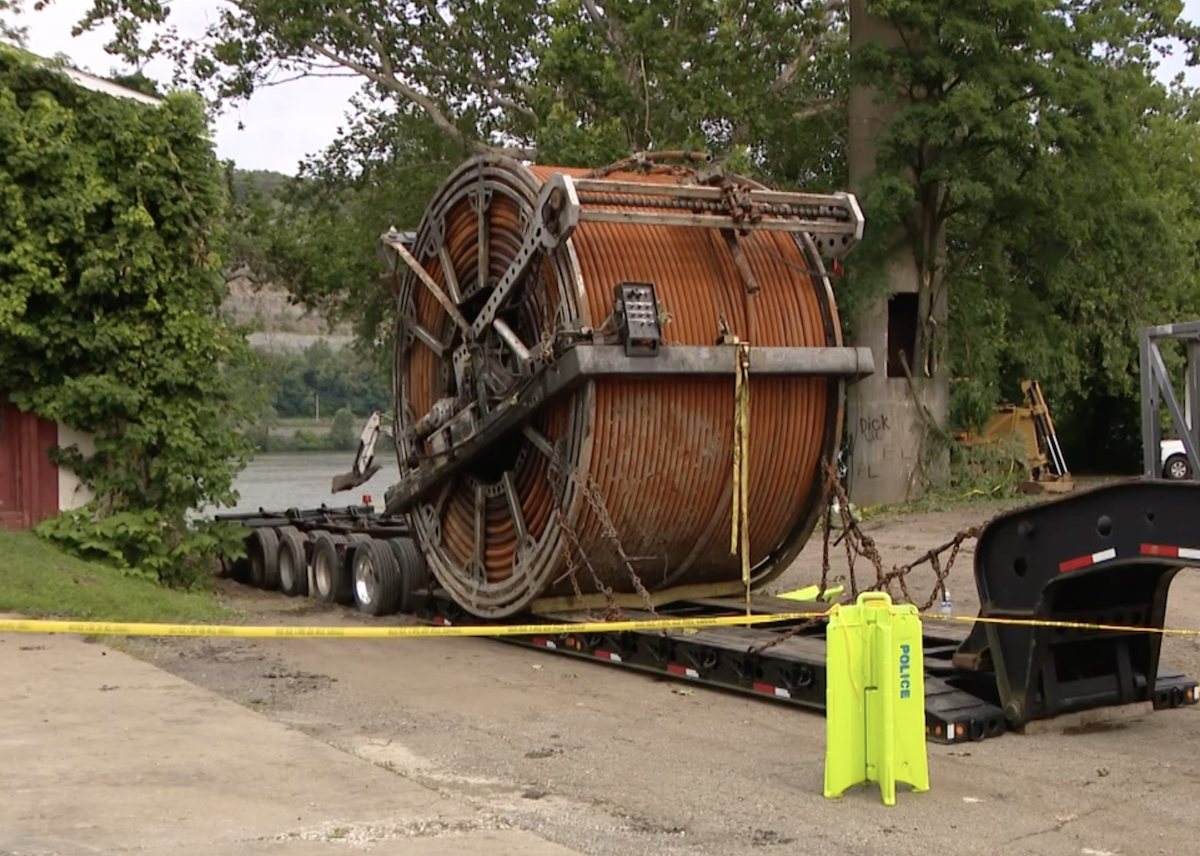Dragonfly Energy also offers remote fleet-level monitoring, where fleet managers can view real-time data on battery state of charge, overnight discharge patterns and system health. (Dragonfly Energy)
Advancements in battery technology are ushering in a newer electric auxiliary power unit — one that results in greater fuel savings and lower maintenance costs while still providing good power.
Two of these newer electric APUs were unveiled at the TPM conference in Long Beach, Calif., in March: Dragonfly Energy’s DualFlow Power Pack and DClimate’s Lithium Pro.
“There really is the ability now to turn the engine off for the full 10-hour rest period and achieve driver comfort and save the fleet money over what they’re doing today,” Dragonfly Energy Chief Commercial Officer Wade Seaburg told Transport Topics. “There’s always a misconception that if you want to do something sustainable, you’re going to have to spend more money. And over the four-year trade cycle, you can do this and actually save operational costs.”
Building the Next Electric APU
The two categories of APUs currently available for the Class 8 truck market are diesel APUs and electric APUs, according to Martin Duffy, chief technology officer for DClimate.
Each category has its pros and cons. Drivers may be more familiar with diesel APUs, but their fuel and maintenance costs are higher. Electric APUs may have greater fuel savings, but their purchasing cost is higher.
Older electric APUs also traditionally relied on AGM batteries, which often can’t make it through a full rest period, according to Seaburg. That’s why Dragonfly Energy has developed the Battle Born All-Electric APU.
“This system uses lithium iron phosphate (LiFePO₄) batteries to power all hotel loads, including HVAC systems, through an entire rest period, without the need to idle,” Seaburg said. “It charges from the truck’s alternator while driving and works with any AC unit a fleet chooses, so it’s flexible and easy to integrate. The system is compact, quiet, and reliable in all seasons.”
Lithium-iron phosphate batteries also weigh about a fifth as much as lead acid batteries, and they can charge up to five times faster, according to Seaburg. The battery packs use cylindrical cells, which Seaburg says allow for passive cooling and include built-in burst caps for thermal protection.

A Battle Born All-Electric APU installed in between the frame rails of a Stevens Transport truck. (Dragonfly Energy)
Dragonfly Energy’s DualFlow Power Pack offering caters to fleets that don’t run APU.
“It’s especially effective during cooler months when HVAC use is lower but parasitic loads still need consistent power,” Seaburg said.
DClimate’s response to reliability concerns was initially to create a hybrid system that can integrate with the truck more while also utilizing a charging and maintenance system that is distinctly different from other electric APUs, Duffy said.
However, DClimate has also been working on another APU to address battery life issues so that the system can better match the life of the truck. Titled the Lithium Pro, the lithium-ion battery-powered electric APU will be commercially available in the third quarter of 2025.
“Lithium Pro now gives us a battery module that matches the design life of our system. So we’re talking about something that’ll last eight to 10 years, as opposed to three to five years with AGM, and it can do it at a comparable cost for the customer,” Duffy said.
From a big fleet perspective, Duffy noted that there is more residual value associated with the APU that’s available when a trucking company decides to trade in the truck after four to five years.
“Now they’re selling a truck that has an APU that’s only 50% of the way through its useful life. So, there’s a really compelling reason to realize residual value at the sale of the truck, and that can become a major component of the return on investment equation,” Duffy said, adding that trucking companies may also benefit from reduced maintenance and simpler installation.
When designing its lithium-ion-based solution, DClimate developed a feature called bi-directional charging to address the issues of extending battery life.
“Essentially, our lithium-ion battery, while it doesn’t possess cranking capability to start the truck, it does possess the ability to keep those batteries charged,” Duffy said, adding that it keeps the battery in a healthy state, thereby reducing the chances of a dead battery or a jump start.

Electric APUs like Thermo King’s Envidia, drastically reduce the cooling time inside the cab. (Thermo King)
Another supplier, Thermo King, offers the Thermo King Envidia, an all-electric APU product that has a maximum cooling output of 8,000 Btu/hr, which significantly reduces the time to cool the cab, says Sid Gnewikow, APU portfolio leader, small trucks, for Thermo King Americas.
Thermo King’s electric APU uses a variable speed compressor to maintain better temperature control and minimize power consumption to promote longer runtime, NXT Batteries, which are standardized with tractor batteries for improved life, a shore power converter that allows both the tractor and Envidia batteries to charge simultaneously, and an optional ThermoLite solar panel to aid in battery charging and increase runtime, Gnewikow said.
Challenges
Despite the advancements in electric APUs, suppliers still see roadblocks to the industry’s full embrace of the technology. Duffy contends that APUs are a blessing and a curse.
“Many APUs, particularly electric, have had a lot of promise, but have just not been able to deliver on that,” he said.
To persuade carriers, suppliers point to the return on investment (ROI) that pays off in the longer term. They argue that a carrier may see ROI anywhere from six months to two years after that initial investment. Seaburg sees an ROI occurring in about a year, “or even as fast as six months,” because trucks burn less diesel per hour through a 10-hour rest period, thus creating fuel savings.
Although fuel savings and ROI are based on numerous factors, ROI using Envidia can be achieved as quickly as 12 to 18 months after operation, according to Gnewikow. He also said the product can result in substantial maintenance savings for the tractor because of fewer diesel particulate filter regenerations, as well as fewer dosing valves and NOx sensor failures.
Trucking companies are also seeking to reduce engine hours, which can be a challenge for newer fleets because, as engines and their after-treatment systems become more complex, the less tolerant these engines are of running at idle, Duffy said.
“Engine hours really are a really important metric. That drives the ability to look at enhanced residual value,” Duffy said. “Will I pay more for the truck that has half the amount of engine hours on the same mileage than the one that has double the engine hours on the same mileage? So, they’re becoming more and more important when you look at return on investment.”
Electric APU Advantages
One carrier that is embracing electric APUs is C.R. England.
The carrier, which ranks No. 42 on the Transport Topics Top 100 list of the largest for-hire carriers in North America, had conducted tests on diesel APUs, but it ultimately determined that the maintenance cost was far too great to result in a positive ROI, according to Ron Hall, C.R. England’s vice president of equipment and fuel.
However, electric APUs were a different story for the carrier. C.R. England conducted another test that involved putting 100 DClimate APUs into service for a year and through all four seasons, and then comparing three idle strategies with existing standard idle parameter strategies.
The carrier found that optimized idle was largely equal to standard idle parameters but gave drivers better comfort and access to hotel loads. Meanwhile, the DClimate unit performed much better than the other options, according to Hall.
The carrier intends to transition the entire sleeper fleet to use DClimate’s electric APUs over the next four to five years as trucks come due for trade, Hall said. Non-APU trucks meanwhile will run on optimized idle.
As the carrier modifies its idle strategies, C.R. England will provide coaching to drivers that exceed certain idle thresholds, such as 30% idle on a day cab or 50% idle on a sleeper. In those situations, the fuel department reaches out to the truck driver to coach that driver on idle performance and offer recommendations, Hall said.
Brian Antonellis of Fleet Advantage and TMC General Chairman Radu Mihai discuss the need for targeted training programs for heavy-duty technicians that build a capable, future-ready workforce. Tune in above or by going to RoadSigns.ttnews.com.
While carriers might have the final say in deciding whether to invest in electric APUs, drivers can influence the ROI performance of the units. Because drivers are integral to the success of electric APUs, they’ve been designed with the driver in mind, suppliers say.
“One of the biggest pain points we consistently hear about is the disruption caused by auto-start systems. When a truck automatically starts and stops multiple times during a rest period to maintain battery voltage, it can jolt drivers awake, disrupt sleep cycles, and even lead to physical strain like back and neck issues,” Seaburg said. “With our lithium systems, that’s no longer a factor — drivers get uninterrupted rest, and fleets get more alert, comfortable operators behind the wheel.”
Dragonfly Energy also offers remote fleet-level monitoring, where fleet managers can view real-time data on battery state of charge, overnight discharge patterns and system health, according to Seaburg. “That means they can proactively identify issues before they turn into downtime, and ensure each truck is running optimally without relying solely on driver reports.”
Gnewikow says Thermo King’s Envidia is customizable to the cab configuration and the driver’s needs.
“The optional diesel fuel-fired heater provides best-in-class heating performance during cold nights, while the optional 1,000-watt inverter provides on-board power needs,” he continued. “In addition, the optional shore power converter helps keep the tractor batteries fully charged and extends hotel load capacity.”
As the industry seeks to increase the sophistication of electric APUs, Seaburg would like to see improvements in compression technology, such as increasing the voltage of the compressor, so that electric APUs can get better at maintaining coolness in the cab.
“I think you’re going to see truck OEMs start to migrate towards higher voltage systems, or those air conditioners, such as 24 or 48 volts. And when they do that, they can get higher Btu out of the air conditioner and get the cooling power to where it needs to be so that it’s on par with the dash beds or the diesel APU,” he said.







